Database design
Database Design

Lis Sulmont
Curriculum Manager
What is database design?
- Determines how data is logically stored
- How is data going to be read and updated?
- Uses database models: high-level specifications for database structure
- Most popular: relational model
- Some other options: NoSQL models, object-oriented model, network model
- Uses schemas: blueprint of the database
- Defines tables, fields, relationships, indexes, and views
- When inserting data in relational databases, schemas must be respected
Data modeling
Process of creating a data model for the data to be stored
1. Conceptual data model: describes entities, relationships, and attributes
- Tools: data structure diagrams, e.g., entity-relational diagrams and UML diagrams
2. Logical data model: defines tables, columns, relationships
- Tools: database models and schemas, e.g., relational model and star schema
3. Physical data model: describes physical storage
- Tools: partitions, CPUs, indexes, backup systems and tablespaces
1 https://en.wikipedia.org/wiki/Data_model
Conceptual - ER diagram
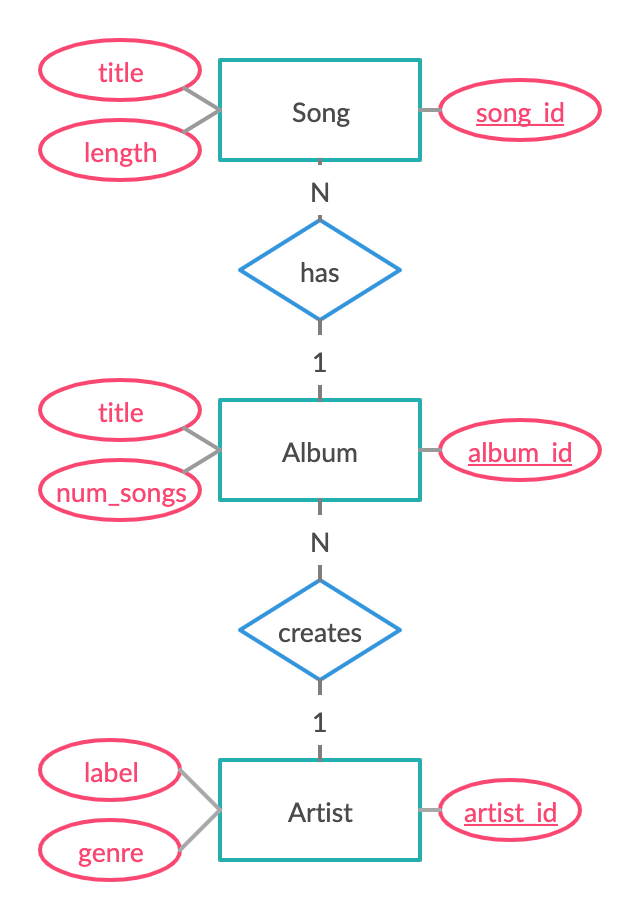
Entities, relationships, and attributes
Logical - schema
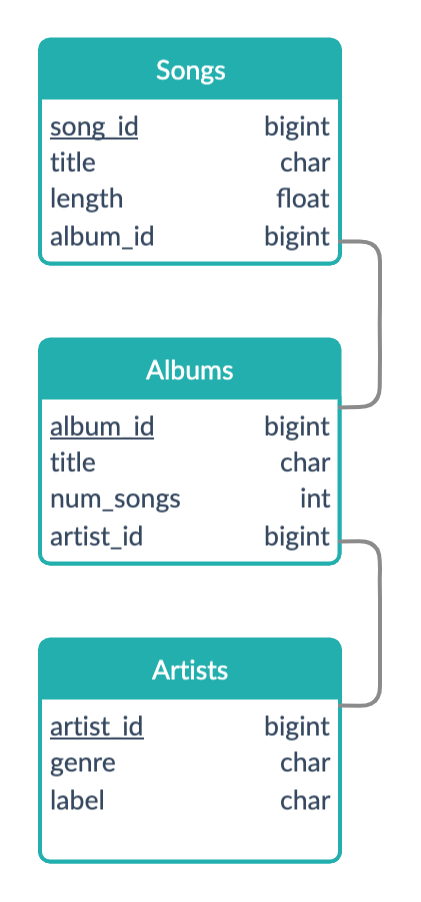
Fastest conversion: entities become the tables
Other database design options
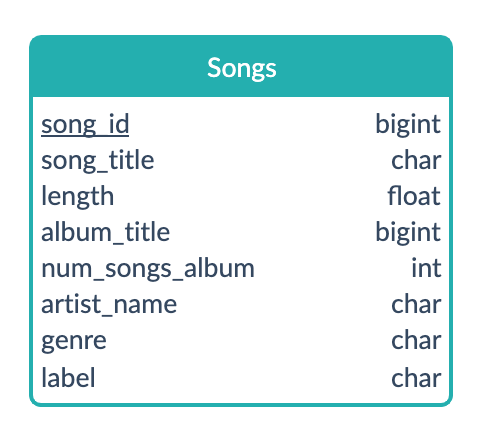
Determining tables
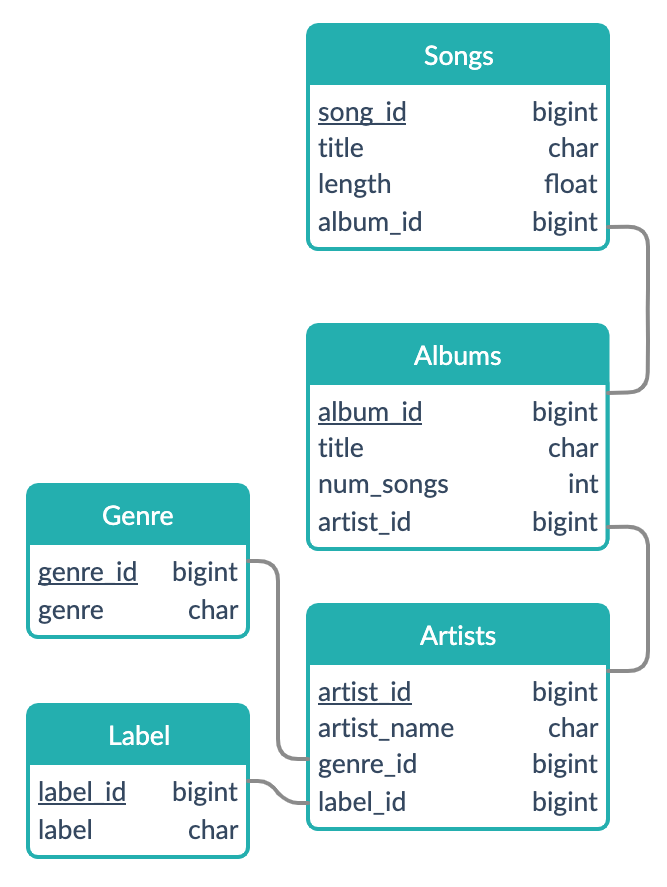
Beyond the relational model
Dimensional modeling
Adaptation of the relational model for data warehouse design
- Optimized for OLAP queries: aggregate data, not updating (OLTP)
- Built using the star schema
- Easy to interpret and extend schema
Elements of dimensional modeling
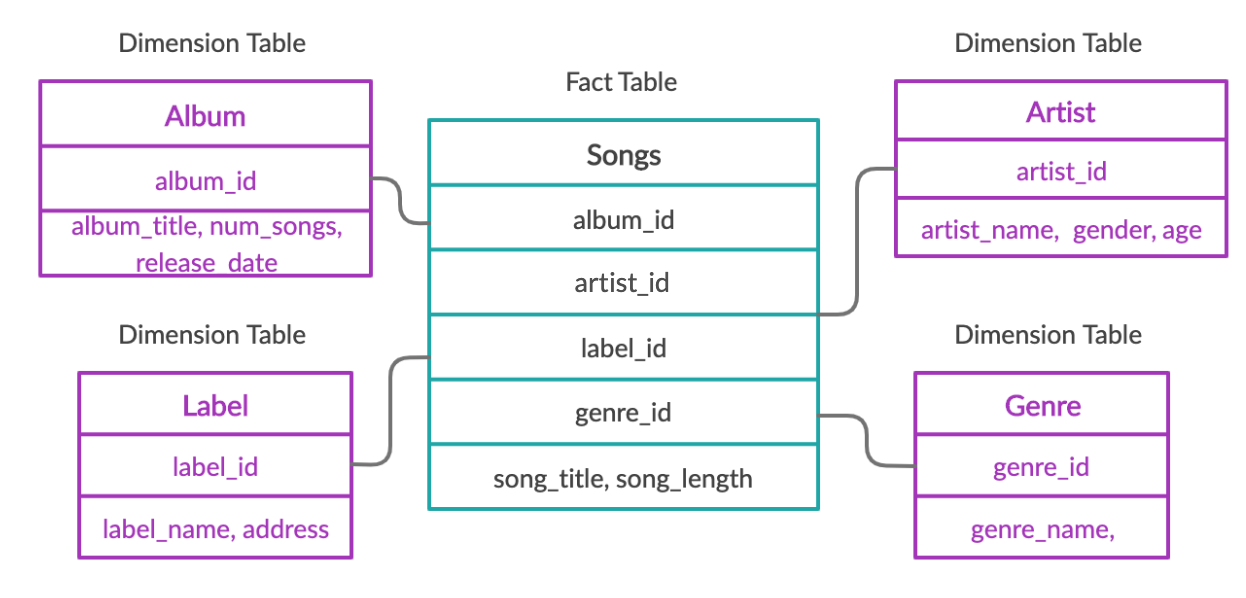
Organize by:
- What is being analyzed?
- How often do entities change?
Fact tables
- Decided by business use-case
- Holds records of a metric
- Changes regularly
- Connects to dimensions via foreign keys
Dimension tables
- Holds descriptions of attributes
- Does not change as often
Let's practice!
Database Design

